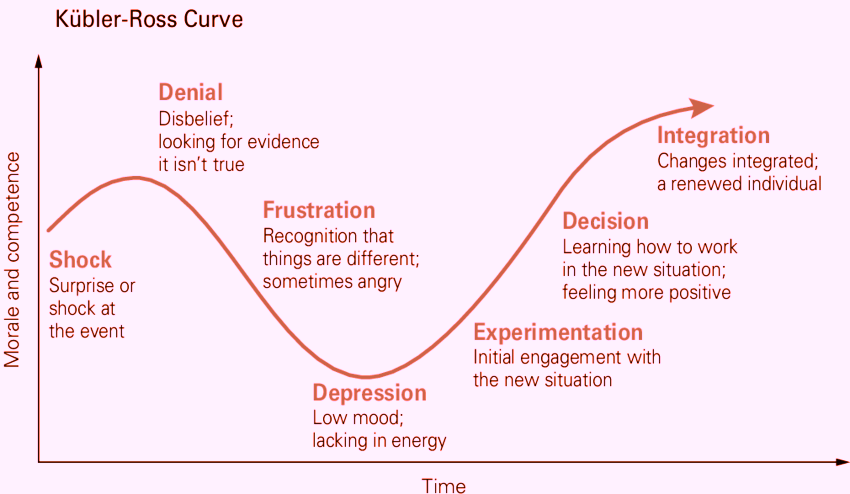What used to be is now turned to be a changing world. A corporate world where we now tend to focus most on the “here and now”, with many reorganizations trying to do more with less. This has direct impact on mental health and people wellbeing as many experts are highlighting every day on any social and professional channels.
In this environment, managers naturally tend to be most focused on essential day-to-day operations and less interested in longer-term activities perceived as having less certain payback. The reverse logic of that is, taking an honest interest in someone builds loyalty.
Loyal employees are more engaged.
Engaged employees are more productive.
Companies generally satisfy employee’s needs for on-the-job development, and these opportunities are valued by them (including high-visibility positions and significant increases in responsibility). But they’re not getting much as it used to be in the way of formal development, such as soft skills training, mentoring and coaching –things employee also value highly.
And those are the classic points why employee’s development is a chronic problem, and why it should not be.
Training remaining the roots of employee’s development, here are few reasons why training beyond general company orientation has to remain a top priority.
You may think that you can’t afford to get into employee’s development strategy taking into account current COVID market situation you face. But development planning doesn’t have to be wide or costly. At its core, it’s mostly a matter of good management teams taking the person-to-person time to understand their employees… recognizing their skills and needs… and guiding them to fill in the gaps. If it’s done well, the payoff can be substantial in terms of long-term loyalty, if not then companies pay a high price: the loss of talents.
Training is not a magical one-time event. It is hard work, and it is a never-ending job. For the managers, training can be one of the most important elements of individual and team success.
Yet, it is often for example, the most neglected part during employee on-boarding and retention.
It is important to keep in mind that:
Training applies to every day of every employee’s life.

Moreover:
Training helps your business run better. For example, trained employees will be better ‘equipped’ to handle client’s inquiries, make a sale or use a new process solution.
Training is a recruiting tool. Today’s younger generations want more than a paycheque. They are geared toward seeking employment that allows them to learn new skills. You are more likely to attract and keep good employees if you can offer development opportunities.
Training promotes job satisfaction. Helping employees to develop more soft skill sets will help them contribute to the company future and growth. The more engaged and involved they are in working for your success, the better your rewards will be.
Training is a retention tool, instilling loyalty and commitment. Employees looking for the next challenge will be more likely to stay if you offer ways for them to learn and grow while at your company. Don’t give them a reason to move on by letting them stagnate once they’ve mastered initial tasks.
Training adds flexibility and efficiency. You can cross-train employees to be capable in more than one aspect of the business. This will help keep them interested and will be enormously helpful to you when setting schedules or filling in for absences or facing change situations (see our Blog about change management). Cross-training also fosters team spirit, as employees appreciate the challenges faced by co- workers.
Training is essential for knowledge transfer. It’s very important to share knowledge among your teams. If only one person has specific skills for your activities, you will have a tough time recouping the knowhow if that person suddenly leaves the company. Spread knowledge around, it is like diversifying your investments.
Training gives seasonal workers a reason to return. Let seasonal employees know there are more ways than one to contribute. Instead of hiring someone new, offer them a chance to learn new skills and benefit from their experience.
Accordingly training and upgrading employee skills makes business sense. It starts from day one and becomes successive as your employees grow. Granted, it may take some time to see a return on your investment, but the long- term gains associated with employee training make a difference. The short-term expense of a training program ensures you keep qualified and productive employees who will help your company succeed.
All the best!











